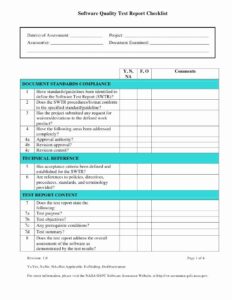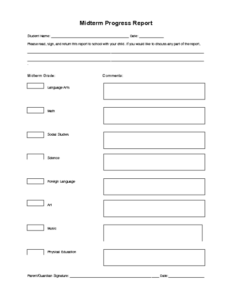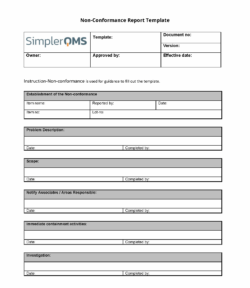Reaching the finish line of a software project is a moment worth celebrating. All the hard work, the countless lines of code, the sprints, and the challenges finally culminate in a deployed product. But is that truly the end? In the world of project management, simply launching doesn’t signify complete closure. There’s a crucial final step that often gets overlooked: documenting the journey and its outcomes. This is where a robust project closure report comes into play, transforming a mere completion into a valuable learning experience.
Think of it as the ultimate debriefing session, captured permanently. It’s an opportunity to look back, analyze what went well, identify areas for improvement, and formally sign off on the project. This critical document ensures that all loose ends are tied, stakeholders are informed, and the project’s legacy is preserved for future reference. Without a proper closure report, valuable insights can be lost, and the same mistakes might be repeated on subsequent endeavors, leading to inefficiency and frustration.
That’s precisely why having a clear, comprehensive software project closure report template is not just a nice-to-have, but an absolute necessity for any organization committed to continuous improvement and operational excellence. It provides a structured framework to capture all the essential details, ensuring nothing is missed and the process is consistent across all your projects. Let’s dive into why such a template is your secret weapon for smarter project management.
Why a Solid Software Project Closure Report Template is Your Best Friend
A well-crafted software project closure report template acts as a powerful tool for knowledge management and organizational learning. It forces teams to pause and reflect, rather than just rushing into the next big thing. By systematically reviewing the project from start to finish, you gain invaluable insights into your processes, team dynamics, and technical execution. This isn’t just about accountability; it’s about building a foundation for future success.
The report serves multiple purposes: it’s a formal record of project completion, a document for financial closure, a source of truth for post-implementation reviews, and perhaps most importantly, a treasure trove of lessons learned. It helps in validating if the project met its initial objectives, adhered to its budget, and stayed within its timeline. Without this structured review, it’s easy for teams to move on without fully understanding the impact and lessons from their latest undertaking.
Key Sections to Include in Your Closure Report
While every project is unique, a good software project closure report template should generally cover several key areas to ensure a thorough review. These sections help paint a complete picture of the project’s journey, performance, and outcomes. Having these predefined categories simplifies the reporting process and ensures consistency across all your project closures.
- Project Overview: A summary of the project goals, scope, and key deliverables.
- Performance Analysis: Detailed review of project performance against planned scope, budget, schedule, and quality metrics.
- Deliverables and Acceptance: Confirmation of all deliverables completed and formally accepted by stakeholders.
- Lessons Learned: A critical section identifying what went well, what could have been better, and actionable recommendations.
- Resource Utilization: An overview of how human and material resources were utilized.
- Stakeholder Feedback: Summarized feedback from key stakeholders, including clients and end-users.
- Future Recommendations: Suggestions for future projects or process improvements based on the project experience.
- Formal Sign-off: Signatures from project managers, key stakeholders, and sponsors, indicating official closure.
The “Lessons Learned” section, in particular, is often considered the most vital part of the closure report. It’s where the team collectively identifies strengths to replicate and weaknesses to address. This introspection fuels continuous improvement, preventing teams from repeatedly falling into the same pitfalls. It encourages a culture of transparency and growth, which is essential for any agile development environment.
Moreover, the report provides a clear narrative for stakeholders who might not have been involved in the day-to-day operations but need to understand the project’s final standing. It offers transparency and fosters trust, demonstrating that the project was not just completed, but thoroughly reviewed and assessed. This level of detail in a software project closure report template ensures that the project lifecycle truly concludes with a comprehensive and actionable summary.
Making the Most of Your Software Project Closure Report
Simply filling out a software project closure report template isn’t enough; the real value comes from how you utilize the information. This document should not just gather dust in an archive. It needs to be a living reference, accessible to future project managers and teams. Consider establishing a central repository where all closure reports are stored and easily searchable. This creates a valuable knowledge base that can inform strategy, improve estimation, and refine processes for upcoming projects.
The process of creating the report itself is also an opportunity for team building and reflection. Involve key team members from various functions – development, QA, product ownership, and project management. Their diverse perspectives will enrich the report, providing a holistic view of the project’s successes and challenges. Schedule a dedicated session for this, making it clear that honest and constructive feedback is encouraged, focusing on processes and outcomes rather than individuals.
Finally, ensure that the recommendations and lessons learned from the closure report are actually acted upon. Integrate these insights into your project management methodologies, training programs, and future project planning. Whether it’s updating a particular process, refining a tool, or providing specific training, closing the loop on these findings is crucial. The effort invested in compiling a detailed closure report only pays off when its contents lead to tangible improvements in your organization’s project delivery capabilities.
The journey from project initiation to successful delivery is complex, and formal closure ensures that every lesson learned along the way is captured and utilized. It transforms individual project experiences into collective organizational wisdom, fostering a culture of continuous learning and excellence. By embracing this final, essential step, organizations can elevate their project management practices and consistently deliver better results.
Investing time in a thorough closure process helps to formalize achievements, analyze performance, and gather crucial insights that will undoubtedly benefit all future endeavors. It’s about building a robust foundation for consistent improvement, ensuring that each completed project doesn’t just end, but also contributes significantly to the growth and capability of the entire team and organization.




